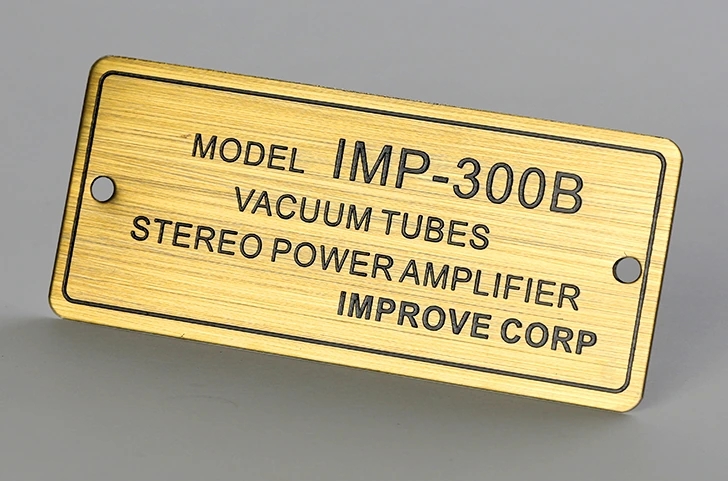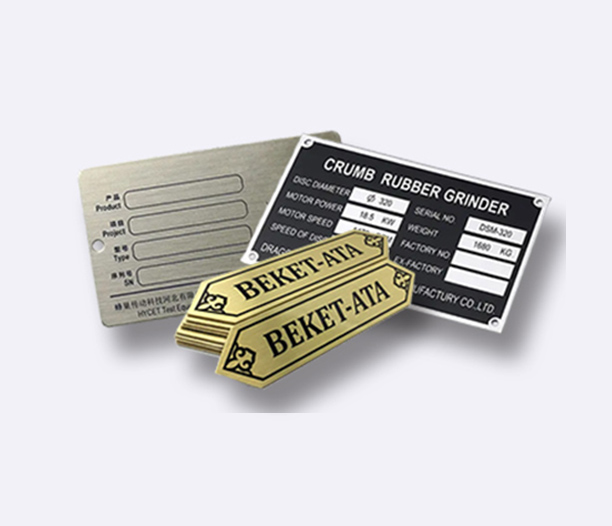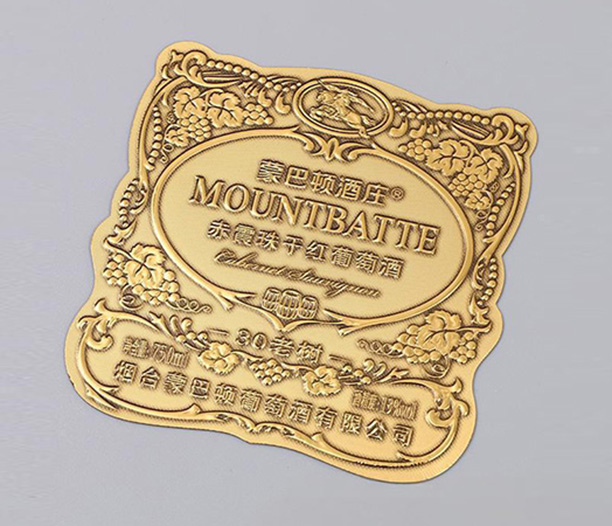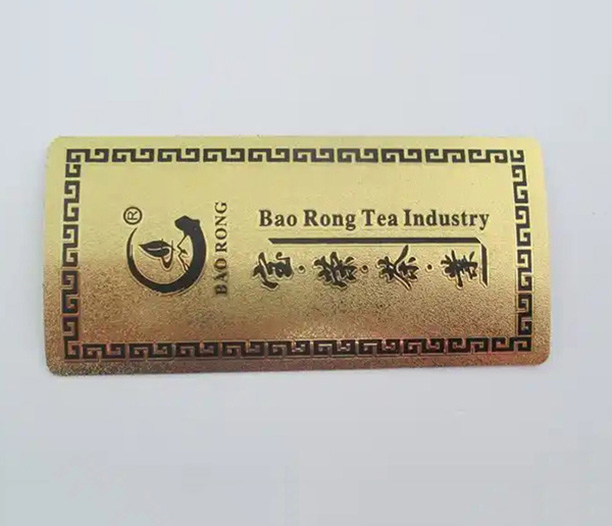For businesses, institutions, and homeowners seeking identification that endures the elements while projecting a polished image, metal name plates for outdoor applications are the undisputed champion. Far surpassing the limitations of plastic, wood, or vinyl, these robust signs offer unparalleled longevity, visibility, and prestige. Whether marking an office entrance, displaying a building name, identifying street numbers, or commemorating a dedication, choosing the right metal name plate for outdoor settings is crucial. This comprehensive guide delves into the essential aspects you need to consider to make an informed decision.

Unmatched Durability & Longevity: The Core Advantage of Outdoor Metal Plates
The primary reason metal name plates for outdoor installations reign supreme is their exceptional durability. Outdoor signage faces a relentless barrage of environmental challenges:
Harsh Weather: Constant exposure to rain, snow, sleet, hail, and humidity can rapidly degrade lesser materials. Metals, particularly those treated or inherently resistant, withstand this moisture without warping, rotting, or delaminating.
Extreme Temperatures: From scorching summer heat to freezing winter cold, metals expand and contract minimally compared to plastics or wood, preventing cracking, fading, or structural failure. Metal name plates for outdoor use are engineered to handle these thermal cycles.
UV Radiation: The sun's ultraviolet rays are the nemesis of many materials, causing colors to fade and materials to become brittle. High-quality outdoor metal name plates utilize finishes and materials that are inherently UV-resistant or coated to protect against this degradation for decades.
Physical Impact & Abrasion: Resistant to scratches, dents (depending on thickness and material), and general wear-and-tear from wind-blown debris or accidental contact, metal offers superior protection compared to softer alternatives.
This inherent toughness translates directly into longevity. A well-chosen and properly installed metal name plate for outdoor use is a true investment, often lasting 20, 30 years, or even longer with minimal maintenance, significantly reducing replacement costs over time.
Material Matters: Choosing the Right Metal for Your Outdoor Name Plate
Not all metals are created equal for exterior use. The choice significantly impacts aesthetics, cost, durability, and maintenance:
Aluminum: The most popular choice for outdoor metal name plates. It's lightweight, naturally corrosion-resistant (especially when anodized), highly durable, cost-effective, and offers excellent versatility for painting, etching, or engraving. Anodized aluminum creates an extremely hard, integral surface layer that resists fading, scratching, and corrosion superbly. Ideal for most commercial and residential applications.
Stainless Steel: Renowned for its exceptional strength and near-total resistance to rust and corrosion, even in harsh coastal or industrial environments. It offers a sleek, modern aesthetic (brushed or polished finishes) and extreme longevity. Grades like 304 or 316 are commonly used. More expensive than aluminum but unmatched for harsh conditions. Often used engraved or with infilled paint.
Brass: Offers a classic, elegant, and prestigious look. Develops a desirable natural patina over time, although this can be lacquered to maintain its original shine (requiring periodic re-application). Naturally corrosion-resistant and durable. Excellent for deep engraving. Typically higher cost than aluminum or steel. Ideal for historical buildings, prestigious institutions, or upscale residences.
Bronze: Similar to brass in its classic appeal and ability to develop a patina. Extremely durable and corrosion-resistant, often used for historical markers, memorial plaques, and high-end architectural applications. Generally the highest cost option among common metal name plates for outdoor.
Copper: Known for its beautiful warm color that oxidizes to a distinctive green patina over time. Very durable and corrosion-resistant. Often used for its unique aesthetic, particularly in architectural accents or artistic signage. Can be lacquered to preserve the bright finish.
Weather Resistance: How Outdoor Metal Plates Stand Up to the Elements
Beyond the inherent properties of the metal itself, metal name plates for outdoor survival rely heavily on specialized finishes and treatments designed to combat specific environmental threats:
Corrosion Resistance: This is paramount. Aluminum relies on anodization or high-quality paint systems with proper primers. Stainless steel uses its chromium content. Brass, bronze, and copper form protective patinas. Choosing the right metal for your specific environment (e.g., marine-grade stainless for coastal areas) is critical.
UV Resistance & Colorfastness: Paints and powder coatings used on outdoor metal name plates must be specifically formulated for UV stability. High-quality industrial-grade finishes resist fading and chalking for many years. Anodized aluminum dyes are also highly UV-resistant.
Moisture Protection: Finishes must create an impermeable barrier to prevent water ingress, which can lead to corrosion beneath the surface or cause adhesives (for applied graphics) to fail. Proper sealing around engraving or edges is vital.
Chemical Resistance: In some environments (industrial areas, near pools), resistance to chemicals, salts, or pollutants is necessary. Powder coating and anodization generally offer good resistance.
Thermal Stability: Quality finishes expand and contract with the metal substrate without cracking, peeling, or bubbling, ensuring long-term adhesion and protection.

Customization & Aesthetic Versatility of Outdoor Metal Signs
Metal name plates for outdoor use are far from utilitarian. They offer immense scope for creating signs that are both highly functional and visually striking, enhancing curb appeal and brand image:
Engraving: Deep, precise engraving into the metal substrate creates crisp, permanent lettering and logos. This can be left natural or filled with durable enamel paints for high contrast and color. Ideal for ADA-compliant tactile signage.
Etching: Chemical or laser etching creates subtle, sophisticated graphics or text directly onto the metal surface, often used for a more understated look or intricate designs.
Painting & Silkscreening: High-quality baked enamel paints or epoxy coatings provide vibrant, long-lasting colors and graphics directly applied to the metal surface. Silkscreening is excellent for multi-color logos or complex designs.
Digital Printing: Direct printing onto specially coated metal substrates allows for full-color photographic images or complex gradients, protected by a durable clear overlaminate.
Shape & Size: Metals can be cut into virtually any shape (rectangles, ovals, circles, custom contours) using laser, waterjet, or die-cutting, allowing for unique and impactful designs.
Finishes: Beyond color, finishes include polished, brushed, matte, textured, or antiqued looks to match architectural styles or branding requirements.
Mounting Options: Flush mounts, stand-offs (creating a floating effect), or posts offer different aesthetic presentations for your outdoor metal name plate.
Professional Installation & Mounting: Ensuring Longevity for Your Outdoor Plates
Even the highest quality metal name plate for outdoor use will underperform if improperly installed. Correct mounting is essential for security, longevity, and aesthetics:
Surface Preparation: The mounting surface (brick, stone, stucco, wood, metal) must be clean, stable, and capable of holding the fasteners securely. Using appropriate anchors for the substrate material is non-negotiable.
Mounting Hardware: Must be corrosion-resistant! Stainless steel screws, bolts, stand-offs, and anchors are essential to prevent rust stains and premature failure. Using incompatible metals can lead to galvanic corrosion.
Adhesive Mounting: High-performance, outdoor-rated industrial adhesives (like VHB tape) can be suitable for lighter plates on perfectly smooth surfaces, but mechanical fastening is generally preferred for permanence and security, especially in high-wind areas or for larger signs.
Sealing: Properly sealing around the edges of the plate and especially around mounting holes/penetrations prevents water ingress behind the sign, which can cause hidden corrosion or damage to the wall substrate.
Stand-Off Mounting: Creates a sophisticated, floating appearance while allowing air circulation behind the sign, which helps prevent moisture trapping and makes cleaning easier. Requires precise drilling.
Professional Expertise: For complex installations, large signs, or valuable materials (like bronze), hiring experienced sign installers ensures the job is done correctly, safely, and preserves the integrity of your investment in metal name plates for outdoor display.
Low Maintenance, High Value: The Practical Benefits
One of the most appealing aspects of metal name plates for outdoor applications is their remarkably low maintenance requirements:
Easy Cleaning: Typically, a simple wash with mild soap and water is sufficient to remove dirt, grime, or pollutants. Avoid harsh abrasives or chemicals that could damage the finish.
No Warping or Rotting: Unlike wood or plastic, metal remains dimensionally stable and immune to biological decay.
Long-Term Appearance: High-quality finishes retain their color and integrity for many years, avoiding the frequent fading or peeling seen with inferior materials. Patinas on brass, bronze, or copper are often considered desirable and require no intervention.
Durability Reduces Replacement Costs: The initial investment in a high-quality outdoor metal name plate is offset by its exceptional lifespan, eliminating the recurring cost and hassle of replacing less durable signs.
Retains Professionalism: A clean, legible, and undamaged sign projects competence, stability, and attention to detail year after year.
Design Considerations for Maximum Impact and Legibility
Creating an effective metal name plate for outdoor use isn't just about durability; it's about communication:
Contrast is King: Ensure high contrast between the background (metal or finish) and the lettering/graphics. Dark letters on a light background or vice versa are essential for readability, especially at a distance or in low light. Filled engraving is excellent for this.
Font Selection: Choose clear, legible typefaces. Avoid overly intricate scripts or ultra-thin fonts, especially for critical information like addresses. Consider font size carefully based on viewing distance.
Information Hierarchy: Prioritize the most important information (e.g., company name, street number) with larger or bolder fonts. Keep text concise.
Size & Scale: The sign must be large enough to be easily read from the intended viewing distance. Consider its placement relative to pedestrian traffic or vehicle approach.
ADA Compliance: If required for public access, ensure raised tactile characters, Braille, specific character proportions, and high contrast (often using engraved and filled methods on metal).
Reflectivity & Lighting: For nighttime visibility, consider:
High-Reflectivity Finishes: Certain painted or anodized finishes offer good reflectivity.
Internal Illumination: Requires specialized construction (backlit sign boxes).
External Lighting: Ensure the sign is positioned to be effectively lit by existing or added fixtures.
Brand Consistency: Ensure the design, colors, and logo usage align with your overall brand identity.
When the demands of the outdoors meet the need for professional, lasting identification, metal name plates for outdoor use consistently prove to be the optimal solution. Their unparalleled combination of rugged durability, resistance to the harshest weather, exceptional longevity, low maintenance, and versatile aesthetic appeal makes them a wise investment. From sleek anodized aluminum on a modern office building to a stately engraved bronze plaque on a historic institution, the right metal name plate for outdoor display enhances your property's image while providing reliable information for decades. By carefully considering material selection, finishes, design, and professional installation, you can secure a signage solution that not only withstands the elements but also elevates your presence, making a lasting statement of quality and permanence. Invest in metal name plates for outdoor durability and timeless professionalism.






